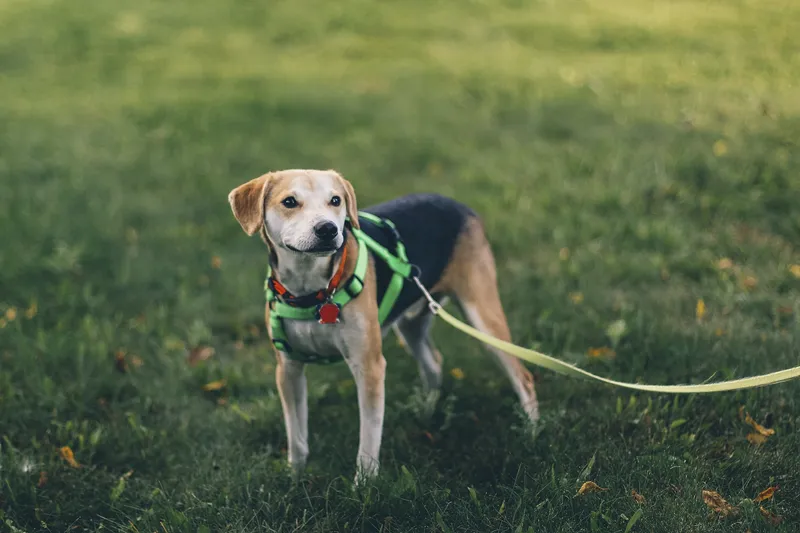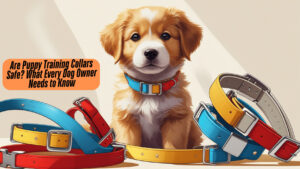Is your lively puppy constantly pulling at the leash during walks? This scenario can be frustrating for both you and your furry friend. While it’s perfectly normal for puppies to be energetic, certain behaviors might indicate that they need a bit more guidance. Training collars can be useful tools when used correctly, but it’s essential to approach their use with care and responsibility.
Understanding Your Puppy’s Behavior: Key Indicators
Excessive Pulling on the Leash
Many puppies tug on their leashes, often leading to discomfort for both the dog and the owner. Statistics show that leash-related injuries to dogs and their owners are alarmingly high. A training collar might help teach your puppy how to walk calmly beside you.
Ignoring Commands
If your puppy often ignores commands, it may struggle to focus or understand what you want. This behavior can hinder obedience and make training challenging.
Reactivity
Puppies can exhibit reactivity through barking, lunging, or aggression towards other dogs or people. If your puppy displays these behaviors, a training collar may be beneficial to help regain control during situations that trigger them.
Difficulty with Basic Obedience
Struggling to sit, stay, or come when called can cause real trouble. If your puppy consistently has issues with these essential commands, it might be time to consider a training collar.

Types of Training Collars and Their Appropriate Use
Traditional Flat Collars
Flat collars are suitable for puppies with basic obedience issues. They are simple to use but can cause injury if used incorrectly. Proper fitting is crucial to avoid discomfort.
Head Halters
Head halters can effectively curb pulling but need to be fitted correctly. Gradually introducing this tool will help your puppy get comfortable with it.
Gentle Leaders
Similar to head halters, gentle leaders offer different control points, like guiding your dog’s head. Understanding the key differences can help you decide which is best for your puppy.
E-Collars
E-collars, or electronic collars, should only be used under a professional trainer’s guidance. They raise ethical concerns and can lead to misuse if not handled with care.
Choosing the Right Collar: Size, Fit, and Material
Importance of Proper Fit
A collar that doesn’t fit well can lead to discomfort or even injury. To ensure the right fit, measure your puppy’s neck accurately and check for adjustability.
Choosing the Right Material
Consider durability, comfort, and ease of cleaning when choosing collar material. Popular choices include:
- Nylon: Lightweight and easy to clean.
- Leather: Durable and comfortable but requires more maintenance.
- Biothane: Easy to clean and waterproof, ideal for active puppies.
Safe and Effective Training Techniques with a Training Collar
Positive Reinforcement Methods
Combining collar training with positive reinforcement techniques can be highly effective. Rewarding your puppy with treats or praise when they follow commands fosters positive behavior.
Consistency and Patience
Training takes time. Maintaining consistency across different environments helps reinforce lessons. Ensure everyone in the household follows the same commands and rules.
Seeking Professional Guidance
Consulting a certified dog trainer can significantly benefit your training efforts. A professional can provide customized plans tailored to your puppy’s specific needs.
When NOT to Use a Training Collar
Puppies Under a Certain Age
Avoid using training collars on puppies until they are fully developed. Consult veterinary resources to determine suitable age recommendations.
Medical Conditions
Some health issues may make collar use unsuitable. Always consult a veterinarian for advice regarding your puppy’s specific condition.
Lack of Proper Training
Improper use of training collars can lead to injury or behavioral problems. It’s vital to approach their use with a commitment to responsible and ethical training.
Conclusion: Responsible Training for a Well-Behaved Puppy
Recognizing the signs that your puppy may need a training collar is the first step. Choosing the right collar and employing effective training techniques is crucial for success. Rely on positive reinforcement and consider seeking professional help to ensure your puppy’s training journey is safe and humane. For well-behaved puppies, responsible training should always be a priority. Make sure to consult with trainers and focus on humane practices that benefit your furry friend.




